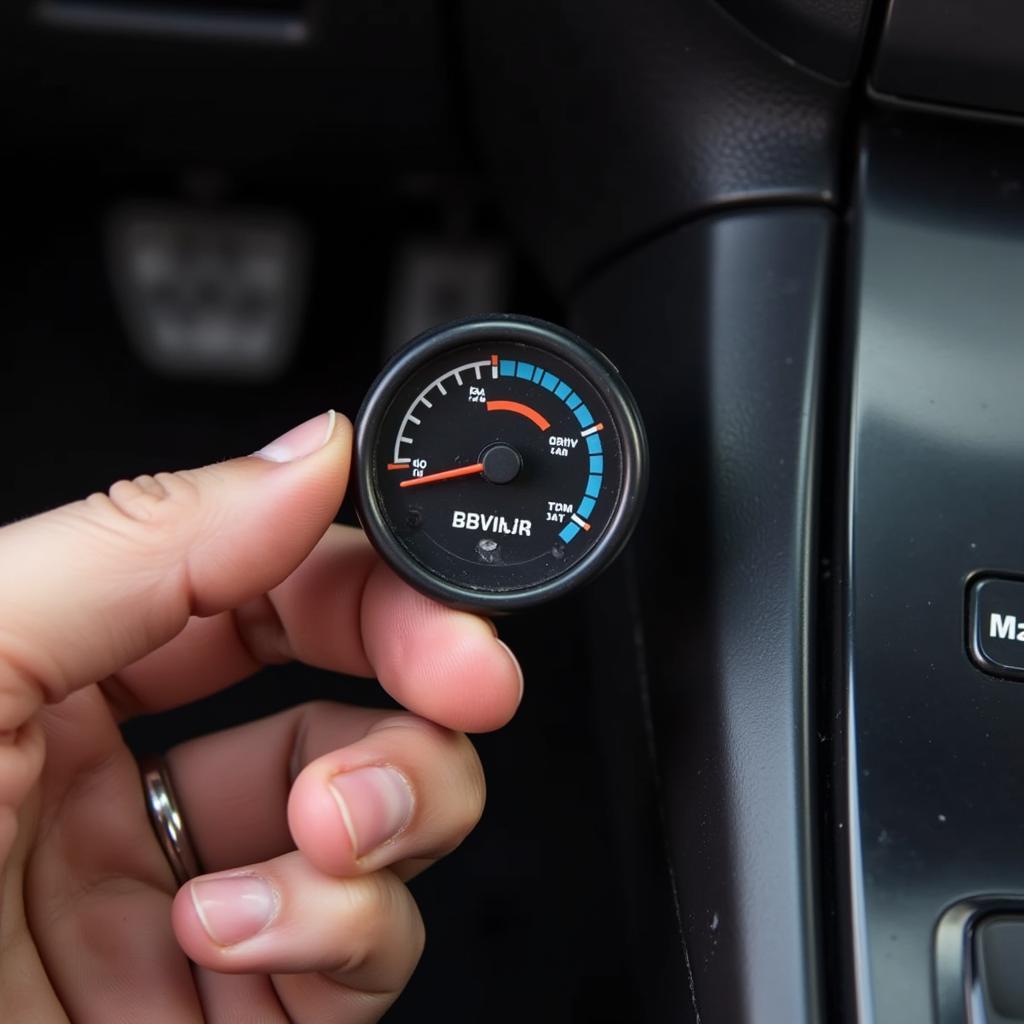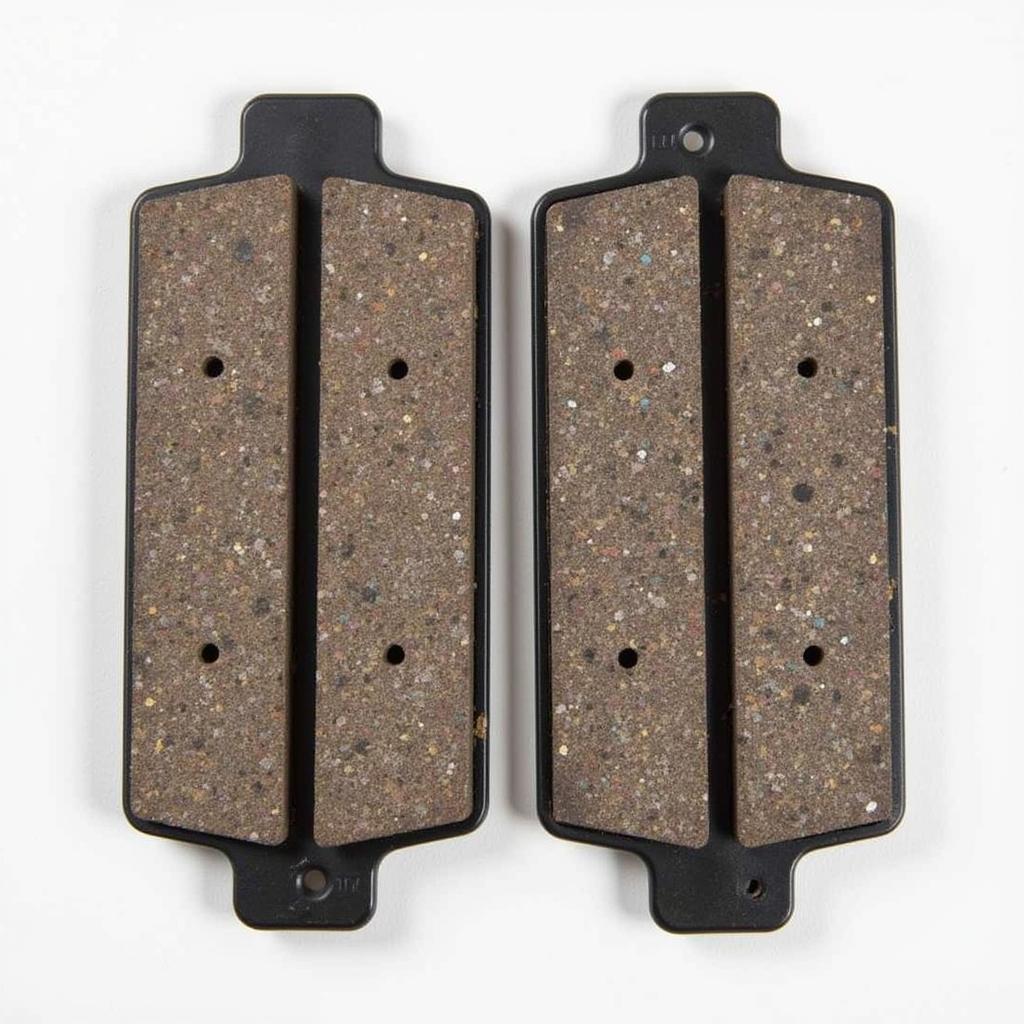The brake warning light on your dashboard is a crucial safety feature, illuminating when your car’s computer detects an issue within the braking system. While it can be as simple as engaging the parking brake, a glowing brake light often signals a problem that needs immediate attention. This comprehensive guide will delve into the common causes of a brake warning light, provide practical solutions, and equip you with the knowledge to address this issue effectively.
Understanding the Brake Warning Light
The brake warning light is designed to grab your attention if there’s a problem with your braking system. Ignoring it could lead to dangerous driving conditions and potential accidents. While a quick check of your parking brake is the simplest fix, other causes require a more in-depth approach.
Common Causes of a Brake Warning Light and Their Solutions
Before attempting any repairs, it’s vital to diagnose the root cause of the illuminated brake warning light. Here are some of the most common culprits:
1. Low Brake Fluid Level
Cause: One of the most common reasons for the brake warning light is low brake fluid. This vital fluid transmits the force from your foot pressing the brake pedal to the brake calipers, slowing or stopping your vehicle. A leak in the system or worn-down brake pads can lead to a drop in brake fluid level.
Solution:
- Check the brake fluid level. Locate the brake fluid reservoir under the hood (refer to your owner’s manual for its exact location). The reservoir will have a “Min” and “Max” marking on the side.
- Add brake fluid if necessary. If the fluid level is low, carefully add the correct type of brake fluid recommended by your vehicle manufacturer until it reaches the “Max” line.
- Inspect for leaks. If the fluid level is significantly low or you need to add brake fluid frequently, there might be a leak. Examine the brake lines, hoses, and connections for any signs of wetness or dripping fluid. If a leak is detected, it is recommended to have it repaired by a professional mechanic as soon as possible.
2. Worn Brake Pads
Cause: Brake pads are designed to wear down over time. As you apply the brakes, friction is generated between the brake pads and rotors, slowing the vehicle. Thin brake pads can trigger the brake warning light.
Solution:
- Inspect the brake pads. If you’re comfortable with basic car maintenance, you can visually inspect the brake pads by looking through the spaces between the wheel spokes. Look for a thin metal indicator that will be touching the rotor if the pads are worn.
- Replace the brake pads. If the brake pads are worn down, they need to be replaced. This is a relatively straightforward job for those with some mechanical skills, but it’s generally recommended to have it done by a professional.
3. Faulty Brake Light Switch
Cause: The brake light switch, located under the dashboard near the brake pedal, is responsible for activating your brake lights when you press the pedal. A malfunctioning switch can cause the brake warning light to illuminate, even if the braking system itself is functioning correctly.
Solution:
- Test the brake lights. Ask someone to observe your brake lights while you press the brake pedal. If the brake lights don’t illuminate, there’s likely a problem with the brake light switch.
- Replace the brake light switch. Replacing the brake light switch typically involves removing a few screws and disconnecting the electrical connector. While not overly complicated, you might want to consult a mechanic if you’re not comfortable working with electrical components.
4. ABS Issue
Cause: Modern vehicles are equipped with an Anti-lock Braking System (ABS), designed to prevent the wheels from locking up during hard braking. A malfunctioning ABS module or sensor can trigger the brake warning light.
Solution:
- Scan for ABS codes. Diagnosing an ABS issue usually requires a specialized scanner that can read the ABS module’s error codes. Many auto parts stores offer free code scanning.
- Diagnose and repair the issue. Depending on the specific error code, the issue might be a faulty ABS sensor, a wiring problem, or a problem with the ABS module itself. These repairs are often best left to qualified mechanics.
5. Other Issues
While less common, other potential causes for the brake warning light include:
- Faulty brake caliper: A seized brake caliper can cause uneven braking and trigger the warning light.
- Master cylinder problems: The master cylinder plays a crucial role in distributing brake fluid. A malfunctioning master cylinder can lead to braking issues and activate the warning light.
- Electrical issues: Problems with wiring, connectors, or the instrument cluster can sometimes cause a false positive brake warning light.
Solution: These issues require a more in-depth diagnosis and are best handled by experienced mechanics.
 Checking Brake Fluid Level
Checking Brake Fluid Level
What to Do When the Brake Warning Light Comes On
If the brake warning light illuminates while driving, it’s crucial to take immediate precautions:
- Stay Calm: Panicking will only worsen the situation.
- Reduce Speed: Gradually slow down and find a safe place to pull over, away from traffic.
- Turn on Hazard Lights: Alert other drivers that you’re experiencing a vehicle issue.
- Assess the Situation: If possible, try to determine the cause of the warning light. For example, if the parking brake is engaged, disengage it and see if the light turns off.
- Seek Professional Help: If you’re unable to diagnose or resolve the issue, it’s crucial to contact a qualified mechanic for assistance. Continuing to drive with a brake warning light illuminated can be extremely dangerous.
Frequently Asked Questions
Q1: Can I drive my car with the brake warning light on?
A: It’s highly discouraged to drive with the brake warning light on. It indicates a potential problem with your braking system, putting you and others at risk.
Q2: How much does it cost to fix a brake warning light?
A: The cost varies widely depending on the underlying cause. A simple brake fluid top-up might cost a few dollars, while replacing brake pads can range from $100 to $300 per axle. More complex repairs like ABS module replacement can be significantly more expensive.
Q3: How often should I check my brake fluid?
A: It’s recommended to check your brake fluid level at least once a month and top it up if necessary. It’s also a good idea to have your brake system inspected by a qualified mechanic at least once a year or as recommended in your vehicle’s maintenance schedule.
Q4: Can I use any type of brake fluid?
A: No, using the wrong type of brake fluid can damage your braking system. Refer to your owner’s manual or consult a mechanic to determine the correct type of brake fluid for your vehicle.
 Worn Brake Pads Next to New Brake Pads
Worn Brake Pads Next to New Brake Pads
Conclusion
The brake warning light is a vital safety feature in your car. Understanding its causes and solutions empowers you to address the issue proactively, ensuring your safety and the well-being of your vehicle. If the brake warning light illuminates, remember to remain calm, prioritize safety, and seek professional assistance when needed. Don’t ignore this warning sign – a well-maintained braking system is crucial for a safe and enjoyable driving experience.


